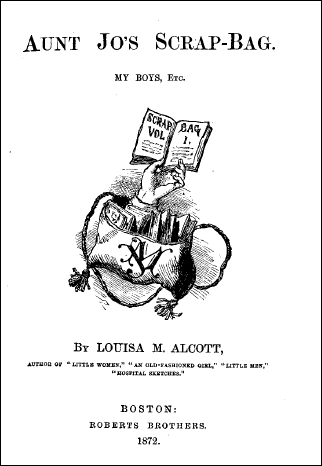Though her wealth and fame now rivaled that of any other American author of her time, that feeling of security never came. She could not reconcile the omnipresent tension between authorial desire and public demand. As in the hearts of the characters she created, the wants of the author strove against the tastes and expectations of others.
Apart from the debate over whether and whom Jo should marry, the documentary record surrounding Little Women is too thin to reveal much about the other ways in which Alcott may have altered her vision of the book to suit the predilections of her reading public. Yet it is fair to say that Little Women tells us as much about what late-1860s America wanted to be told about itself as it does about what Louisa May Alcott hoped to achieve as an artist. The book as a whole strikes a remarkable balance between reform and reassurance. With its pleas for temperance, its championing of support for the emancipated slaves, and its advocacy of charitable works of every description, Little Women plainly sought to urge the country toward a more humane and virtuous footing. At the same time, though, it invited readers to take secure comfort in the knowledge that the foundation of society, namely the family, was solid and enduring. In the novel’s final chapter, Jo utters a pronouncement that arguably stands as the culmination of all that Alcott has shown us: “I do think that families are the most beautiful things in all the world!” Yet Alcott adds in the next breath that Jo has been speaking “in an unusually uplifted frame of mind, just then.” Alcott was aware that Jo’s ebullient opinion was not always true: not for Jo and, more emphatically, not for Alcott herself. For many of us, as Alcott surely knew, the dream of making our families the most beautiful things in the world can fall painfully short of coming true. The fortunate may agree with Jo; others may be able to read her words only with a brutal sense of irony. Yet Little Women has retained its appeal precisely because of the bridges it builds between the “is” and the “ought.” By representing its miracles of love and togetherness as difficult but possible, the novel encourages us to try harder, to be more accepting of one another’s failings, all in the faint but persistent hope that we, too, can resemble the Marches.
Alcott wrote not only to inspire and to reassure. She also wanted to express herself—or, more accurately, the self she remembered being in her youth—frankly on the page. Through Jo, she wanted to present her own spirit, with neither the veneer of tact nor the gloss of propriety. Certainly, Little Women is a novel, not a memoir, and it contains a host of scenes and characters that had previously existed solely in Alcott’s imagination. At the same time, though, Alcott regarded Jo as an alternate version of herself. In letters written after Little Women, Alcott sometimes deliberately blurred the line between truth and fiction, alluding to family members by the names of their fictional counterparts. She published a series of short story collections that bore both her own name and the title of Aunt Jo’s Scrap-Bag. The identification deepens in Jo’s Boys, the last volume of the Little Women trilogy, when Jo, now a mature woman, becomes unexpectedly rich and famous for having written a book that is really Little Women:
A book for girls being wanted by a certain publisher, she hastily scribbled a little story describing a few scenes and adventures in the lives of herself and sisters,—though boys were more in her line,—and with very slight hopes of success sent it out to seek its fortune. . . . The hastily written story . . . sailed . . . straight into public favor, and came home heavily laden with an unexpected cargo of gold and glory.
Alcott thus constructs a charming illusion of circularity: the adult Jo has been writing herself into existence since the first page of Little Women, and the entire trilogy has been a fiction composed by an author who is herself a fiction. If one accepts Alcott’s clever conceit, then Jo has two voices in Little Women: the frank, unguarded, youthful Jo March, and the narrator, who represents the perspective of the grown woman she later becomes. Little Women thus expresses a kind of dual awareness.

A savvy marketer as well as a beloved author, Alcott seldom let a holiday season pass without turning out a new book for her fans’ Christmas stockings.
1 comment